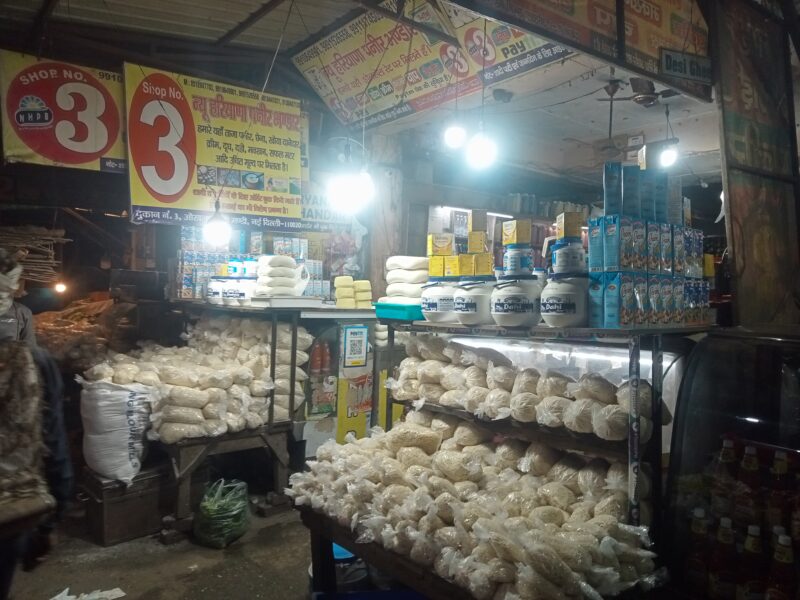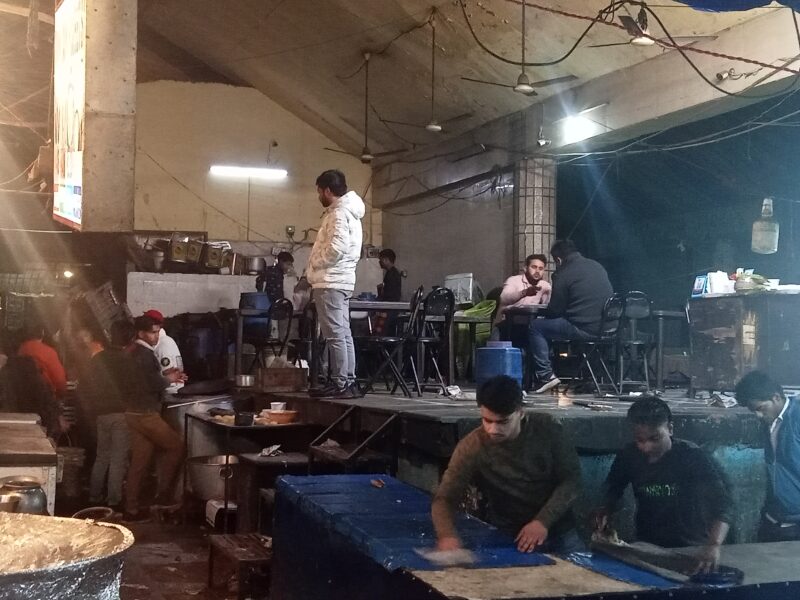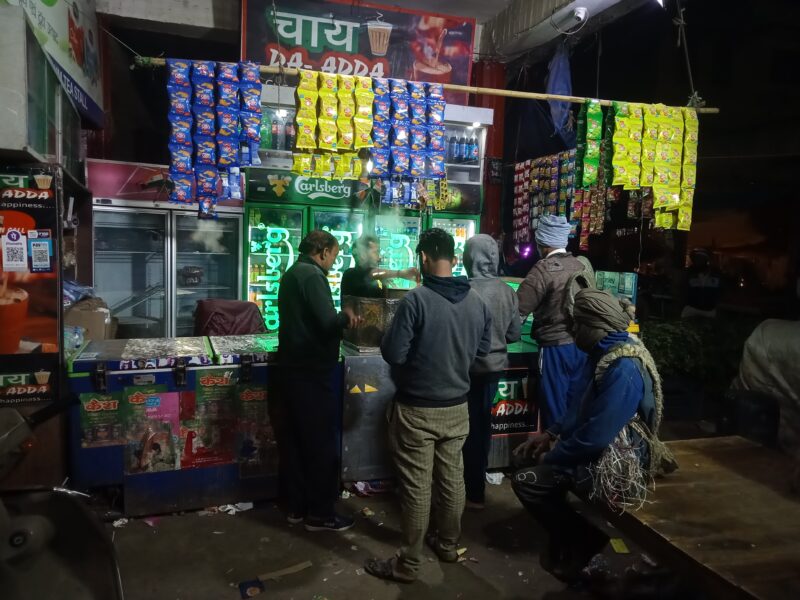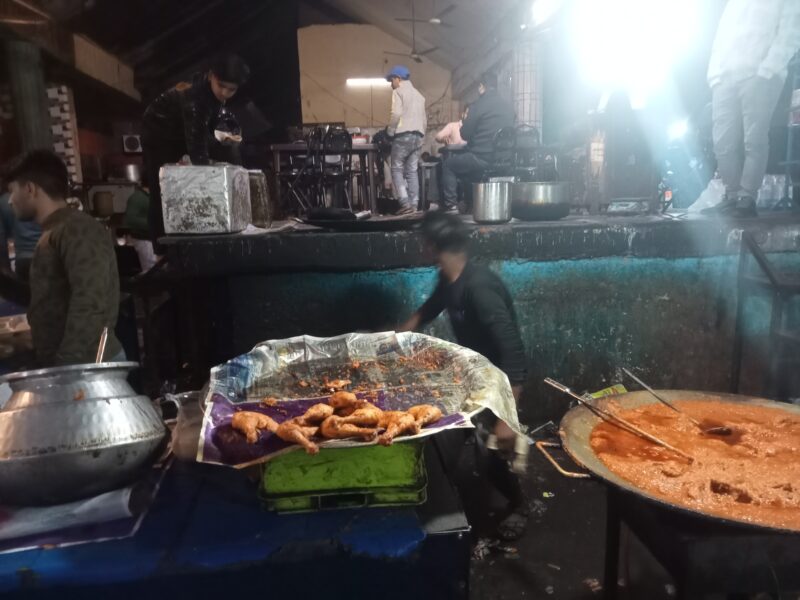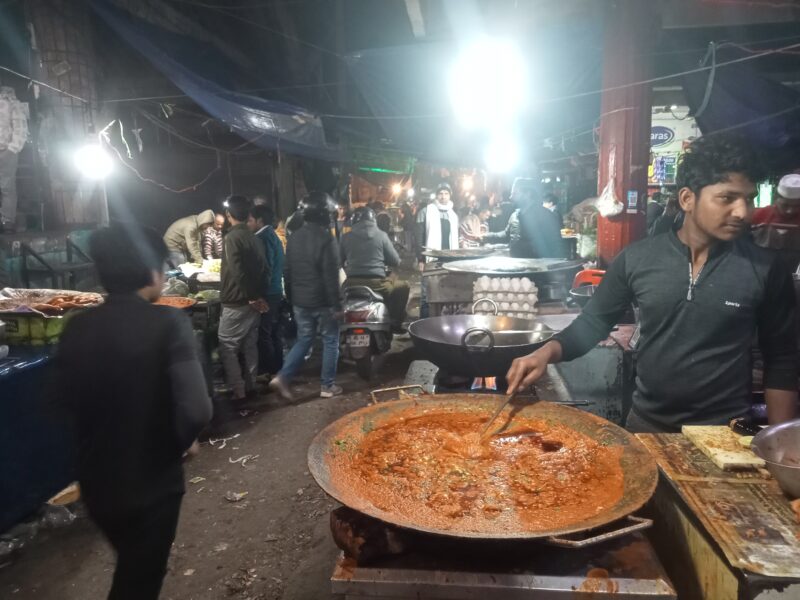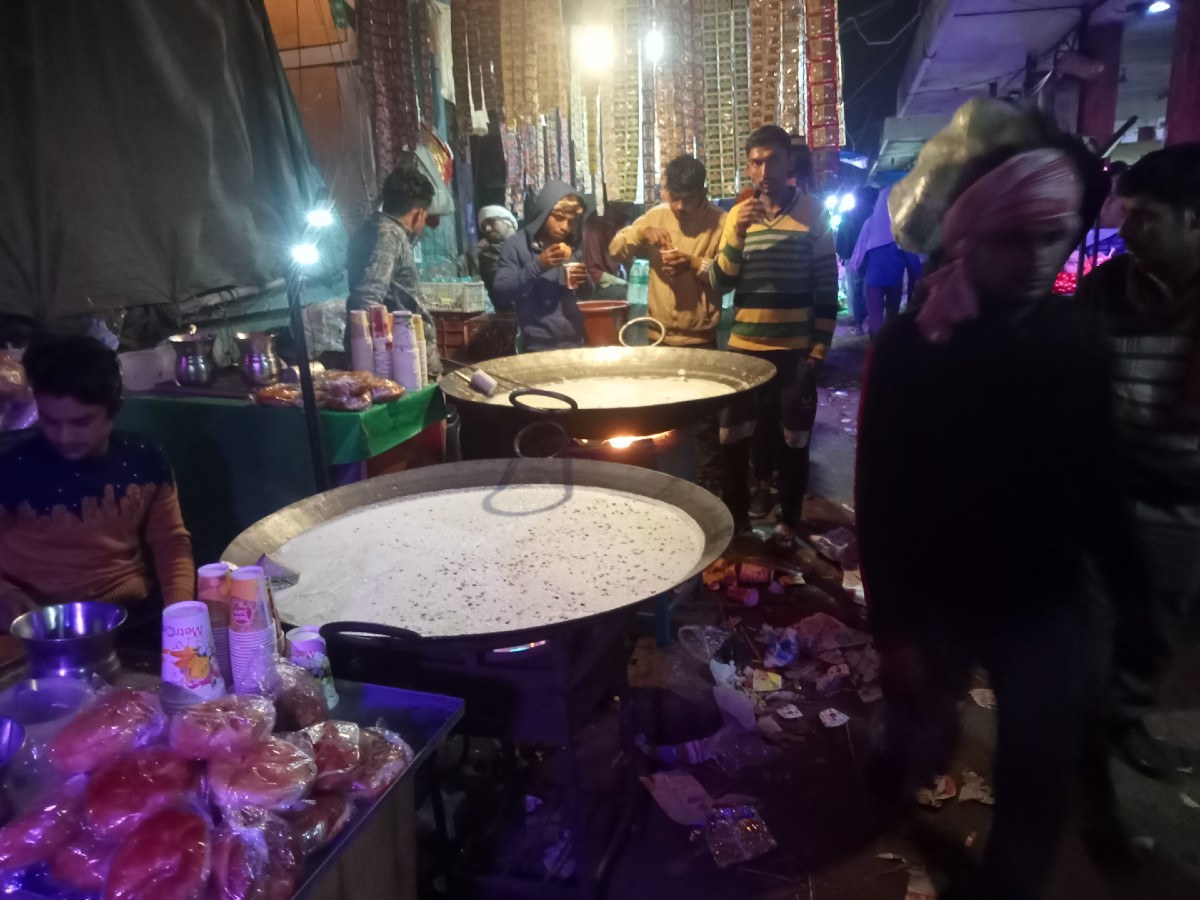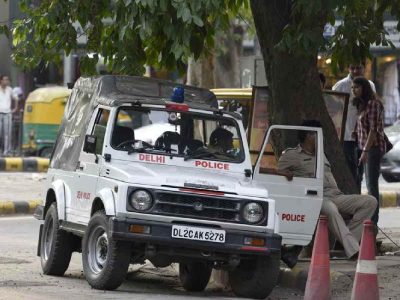During the night, the Okhla Sabzi Mandi looks like any other sabzi mandi (vegetable market) in the city from outside. But as one enters the premises, one is welcomed by an array of food stalls selling all things one can ask for: butter chicken, fried chicken, variety of parathas, vegetarian dishes, warm milk, and variety of sweets such as rasgulla, gajar ka halwa, and barfi.
Popular among labourers and working professionals who do night shifts, the market starts at four in the evening and runs till four in the morning. The first three hours are spent in preparation and the atmosphere is lazy and usual. At 7 pm, the hustle-bustle of the market begins but the visitors usually include workers of the mandi and labourers. As the night approaches and the shops in the city are closed, the mandi turns into a go-to hub for those looking for a place to sit and eat. To an observer, it looks spectacular, a parallel world existing in the dead of the night.
“I have been selling butter chicken here for almost 10 years. We start as early as 4 pm but our food is mostly sold when the city shuts down. It is for the labourers of the mandi, but there are people from outside who come to visit the place every night. I know labourers here who do not step outside the mandi for months because everything is available here in this market,” says Tanveer Ahmad, who owns a shop in the market.
One can easily spot a group of friends in formals sitting and gossiping as they savour their favourite dishes. The shops with colourful vegetables on display add to the environment.
Nisar Ahmad, who now lives in Dubai, worked as a call centre excutive and often visited the place during his night shift. Instead of ordering food online, he preferred to come to the market due to the buzz.
“I loved the parathas here. I used to visit the place almost every day when I was working at a call centre. The stress that the job had on me would significantly subside whenever I stepped into this market. You can hear the shouting of shopkeepers and the sight of vegetables eases your mood for some reason. I know a number friends I have recommended this place and they all prefer to visit it during the nights,” he says.
While most of the shops in the mandi are makeshift, there are proper sitting areas that look like restaurants. The market is usually crowded and people often visit the place in Uber and Ola, and the visitors can easily hire an autorickshaw back to their homes at any time of the night.
As the market comes alive during the night, one would expect it to attract only the male visitors. But one can easily spot female visitors in the market, although significantly less in number.
“When I came here for the first time, I was very intimidated as all the people who were eating here were male. But then I started to see female visitors in a group of male friends and it made me feel comfortable and easy. It’s such a beautiful place, and you would not expect anybody to misbehave with you even at this hour of the night. I am so glad I came to know about it,” says a woman in her early 20s on the condition of anonymity. She was working in night-shifts when she got to know about the place and now visits it to spend quality time with friends.
The market is not only an alternative when the food is not available in the city. It is also a hang-out place for many students, especially those from the nearby university Jamia Millia Islamia.
Uttam Prasad, a student of solar energy at the university, would visit the place with his friends whenever he had to stay awake during nights for exams to calm his mind and release the stress. “You come here and you chill and you go back to study,” he says.
The most special thing about the market is the presence of a number of shops that sell warm milk simmering in a huge karahi (wok). Labourers prefer to drink warm milk after their work ends.
“It gives them nutrition that they need for the kind of hard work they do. They drink milk and they work hard,” says one of the shopkeepers who was selling milk.
By the time the night breaks into day, almost all the woks of warm milk were empty. And soon, the food stalls are replaced by stalls selling vegetables at cheap prices. Almost all the traces of a food market vanish after 4:30 am, and it looks as if the market never existed.
